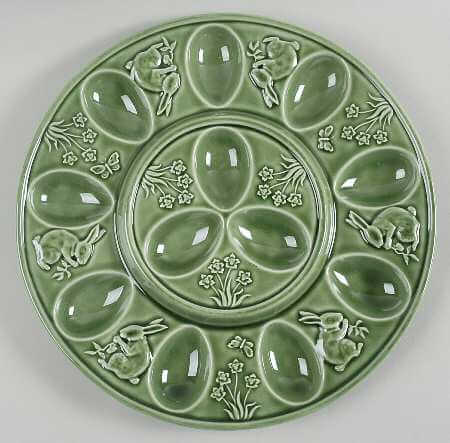Devilled eggs. A staple at my family’s picnics. A 1950s joke. A modern canvas for fine herbs and expensive vinegar.
 From boiling the eggs properly to prevent the olive green ring on the yolk, to preventing the tear of a fragile white, mashing the chalky yellow into something palatable, all which will convey into your throat on the slickness of the white, little fat bombs sliding into home base.
From boiling the eggs properly to prevent the olive green ring on the yolk, to preventing the tear of a fragile white, mashing the chalky yellow into something palatable, all which will convey into your throat on the slickness of the white, little fat bombs sliding into home base.
My family recipe is much more of the 1950s bent. Mayo, mustard, ketchup (just a little for tang, lest the yellow yolk filling turn orange) salt & pepper, and secret ingredient, sweet pickle juice.
Forbidden City, 1943. What’s on the Menu? New York Public Library.
Devilled or Deviled? Devilled eggs in 1901 aren’t restaurant food. A quick check of the What’s on the Menu? Project at NYPL finds only one reference to deviled eggs (with two “l”s), and that on a catering menu from the Baily Catering Company in 1901. It’s more likely you’d get devilled sardines on toast, at five references. But deviled with one “l” yields more results – interestingly, for deviled egg sandwiches, served in the 1940s. Known in France as ouefs mimosa, there were no references for that term in the What’s on the Menu? Project.
Ann Treistman recently wrote a book Who Put the Devil in Deviled Eggs? The Fascinating Storied Behind America’s Favorite Foods that reveals the centuries old tradition of spicing and stuffing the yolks of hard boiled eggs. However, my family’s deviled egg roots more likely stem from this recipe from the 1870 Cassell’s Dictionary of Cooking:
Photo: Google Books
